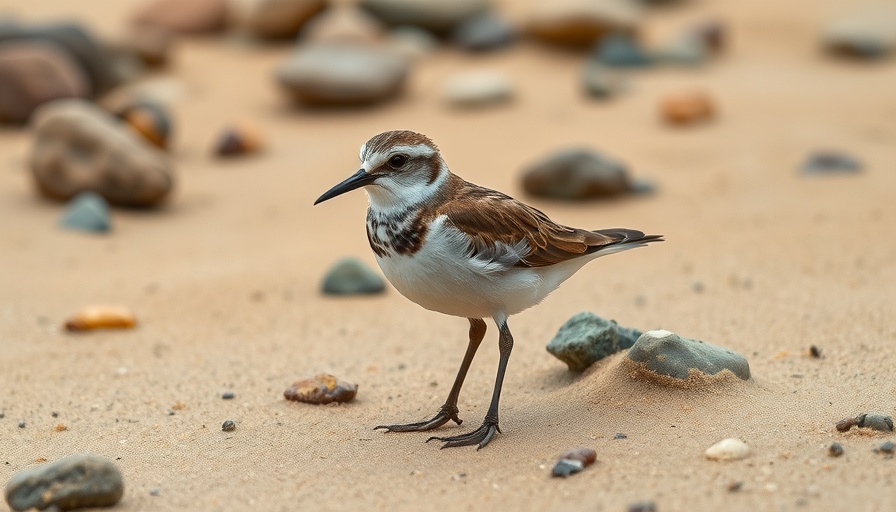
Climate Change Hits Great Lakes Water Birds Hard
Climate change is having a profound impact on the ecological balance of the Great Lakes region, particularly affecting the health and migration patterns of water birds, such as the endangered piping plover. According to a recent study led by Nathan Alexander from the University of Illinois, rising temperatures are creating conditions that encourage outbreaks of avian diseases like botulism and avian influenza, posing a significant threat to local wildlife.
Rising Temperatures and Avian Diseases
"We've seen an alarming increase in avian disease incidents over the past 50 years," states Alexander. The studies reveal that warmer water temps facilitate the growth of Clostridium botulinum bacteria, the culprit behind botulism, which affects birds by paralyzing their muscles and affecting their ability to fly and feed. This disease flourishes in decomposing mats of cladophora algae, which proliferate in warmer water environments.
The Migration Dilemma
Pivotal shifts in the migratory behavior of birds have also been documented. Historically, many species would migrate to southern wintering grounds to escape freezing temperatures and ice-covered water. However, as milder winters become the norm, birds are finding conditions more favorable closer to home. Barb Avers, a waterfowl and wetland specialist at Michigan's Department of Natural Resources, explains, "Birds are no longer required to migrate as far south for food and water, leading to a significant decrease in their historic winter populations. Some species may relocate entirely, altering their migratory patterns in response to these changing climates."
Understanding the Consequences
This phenomenon raises questions about the long-term ramifications for the Great Lakes ecosystem, particularly as it relates to biodiversity. With certain migratory birds opting out of their traditional routes, there is concern about how this local ecological change will intersect with broader environmental issues. For example, reduced species diversity can affect pest control and plant pollination as birds play vital roles in these processes.
What Can Be Done?
Awareness and proactive engagement are key. Local communities, conservationists, and policymakers must prioritize the protection of habitats and the mitigation of climate change. Tools such as sustainable fishing practices can help maintain a balance in aquatic ecosystems affected by both algae blooms and avian diseases. Additionally, habitat restoration projects can create sanctuaries that might provide refuge for the changing populations.
Final Thoughts
The relationship between climate change and avian health challenges us to rethink our approach towards our environment. The ecosystem disrupts with every change, and the impact extends beyond just one species. Engaging with our local environment through conservation efforts fosters better understanding and protection for the fragile ecosystems that sustain both birds and humans. According to recent reports, collaboration among various stakeholders will be essential to implement effective measures to tackle these pressing ecological challenges.
 Add Row
Add Row  Add
Add 




Write A Comment